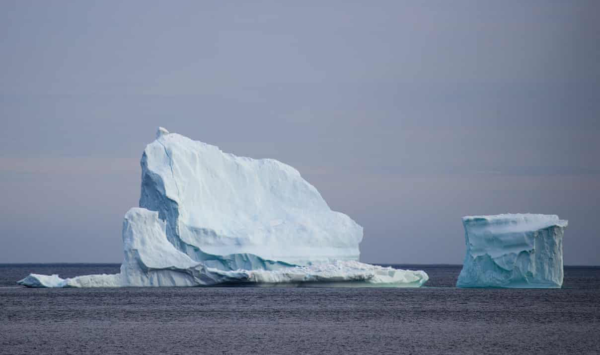
Māori Climate Commissioner, Donna Awatere Huata, says the latest research from Greenland is a grim new climate change warning.
“The study, published in Proceedings of the National Academy of Sciences, shows that since 2003, ice melt in Greenland has increased four-fold. That’s almost 300 billion tons of ice per year and it’s rapidly getting worse.”
“This is dangerous for two reasons. The first is that previous studies had focused on ice loss from glaciers, while this research points out that ice mass is now melting as well’.
“The second reason this is dangerous is because one of the major pumps for the oceanic current flow which distributes heat from the tropics to the Northern Hemisphere is in the Labrador Sea, south of Greenland. A massive influx of fresh water would desalinate the Labrador pump and shut down the oceanic current. This would have catastrophic impact on climate alongside disastrous sea rise.”
“The time for tinkering at the edges to adapt the economy has past, and our political system needs to be far more focused on immediate reform and solutions. To date we are seeing leadership that is asleep at the wheel of the Titanic.”
Donna Awatere Huata
Māori Climate Commissioner






Oceans are the warmest they have been since record keeping began (and warming faster). Glaciers are melting, permafrost is being destabilised, there are unprecedented heatwaves, sea ice is melting (Antarctica) or not forming normally Arctic Sea)……
I see the daily atmospheric CO2 has reached the remarkably high level for January of around 414 ppm.
Daily CO2
January 22, 2019: 413.86 ppm
January 22, 2018: 408.95 ppm
And the Keeling Curve is looking extremely ‘unusual’, with many results already over 413 ppm, suggesting high results are not outliers but are indicative of a nasty trend that could well result in the annual peak in May being well over 415 ppm….perhaps even 416 or more.
https://scripps.ucsd.edu/programs/keelingcurve/wp-content/plugins/sio-bluemoon/graphs/mlo_two_years.png
We will get clarification of just how bad the meltdown is and just how unusual the atmospheric CO2 results are over the coming months, with September 2019 being the critical month for the Northern Hemisphere
Meanwhile our so-called leaders pursue economic growth based on increased use of fossil fuels, with the commensurate increase in emissions. Something’s gonna break soon.
Pity the children.
Hi again AFKTT
You have clearly been watching this for some time. I have accepted anthropomorphic induced climate change as lots of inlaws and outlaws have been onto it for years, so I have just started looking into it myself . In past temp/CO2 fluctuations from ice cores etc the sea seems to warm and release CO2 and absorb more when it cools. So warming prehistorically seems to have come first and CO2 rise has followed in both directions up and down. Most of the articles I find on warming in the present don’t seem to look at the two in isolation but two that I have found, one dealing with Sea temp rise over the last 135 years”https://www.livescience.com/19414-oceans-warming-135-years.html,” and one dealing with lower atmospheric temperature over the same period ” ,give a sea (ocean ) temperature rise of 0.59 c , and a lower atmosphere rise of 0.35c “.https://www.geocraft.com/WVFossils/last_100_yrs.html”
This seems to suggest that the pattern is the same as it has been in the past with the sea temp rising first and the air temp following. Can you comment on that please?
Another concept that puzzles me is that with the CO2 content having increased by 25% (of itself) over this period. If it is as dramatic an influence on temperature as predictions assume it to be, why has a 25% increase not had a far more dramatic effect than it has had?
And again where does the effect of water vapour fit in to it all? Only a few articles that talk about the effect of CO2 mention the fact that the most important greenhouse gas by far is water vapour. And the warmer it gets the more water vapour is produced. So why does water vapour not self feed the greenhouse effect and cause the temperature to run away all by itself without any reference to the relatively small (tiny) effect of CO2?
The answer is that water vapour also operates to limit warming by effectively gathering heat up at the surface and conducting it to cloud level where it condenses and distributes it’s heat away as much as back down. I don’t see how the temp level water thus sets should be any different because a wee bit more of the warming was caused by CO2 initially than before . I don’t see how water in it’s cooling effect can distinguish between warming due to CO2 and warming due to water valour itself so as to control temperature rise it is responsible for itself , but not what CO2 is responsible for. In fact so the experts say multiplying the effect of CO2.
The reason I suggested earlier that people do they own googling is that there is so much contradictory stuff out there on this subject that any reference is likely to be ridiculed by someone of a different predisposition to the question. I would like to know enough to form my own opinion which I haven’t quite yet. If the reference you gave me in your last comment addressed to me is correct, we will all know soon enough what the truth is. And again if it is right then any other matter that we all think and talk about like Syria Trump Brexit , local politics and LGBT issues are simply a means of wilful distraction to avoid having to think about our early demise.
Cheers D J S
Hello David.
Yes, I have been aware of the danger of rising atmospheric CO2 for decades…since the 1980s in fact, and wrote several books which included the topic. My activism on this matter (and other nearly as crucial) peaked over the period 2002 to 2014. After 2014, I pretty much gave up because it was clear to me I was wasting my time, my energy and my money. Corruption and ineptitude are rife in governments and bureaucracies and commerce. Along with ignorance and complacency, corruption and ineptitude will determine the future. Nowadays I just follow the trends and make comments on TDB. And watch it all be made worse by the day.
I suggest you study the Milankovich cycles because they, along with volcanic activity, governed the Earth’s temperature prior to massive desequestration of ancient carbon by humans. Hence, CO2 (and CH4) did follow temperature. But that changed in the late 20th century and when CO2 began to trap sufficient additional heat to overwhelm the natural systems.
‘If it is as dramatic an influence on temperature as predictions assume it to be, why has a 25% increase not had a far more dramatic effect than it has had?’
The effect of CO2 rising from 280 ppm to over 400 ppm has been extraordinarily dramatic. By the 1980s the increase in atmospheric CO2 had reversed the cooling (that led to prediction of a mini ice age), and now has raised the heat content of the oceans by a staggering amount, as well as reducing the sea ice cover by a staggering amount.
Remember that the latent heat of phase change ice to water results in energy being used without an change in temperature. It is once the ice has gone that really dramatic changes in temperature will occur. That is why some observers and commentators are s concerned about the rapidly reducing ice cover of the Arctic: once the ice has all melted all trapped heat will manifest as increased temperature.
And do not forget that every location on earth spends half it time in darkness, losing heat to space. Despite that nightly heat loss, everywhere is warming. The warming of the permafrost is arguably the most dangerous, since it releases greenhouse gases.
The rate of change in overall heat content is now compared to that of great extinction events, particularly the Permian great extinction event. There is evidence it is a lot faster than during that great extinction event, which took place over thousands of years.
Your comments regarding water vapour have been gone over a thousand times before, and the answers are readily available on the Internet. Water vapour can never be a prime driver of warming because it changes phase in the temperature ranges of the Earth (whereas CO2 does not undergo phase change). Water vapour in the atmosphere does add to that caused by other primary greenhouse gases, primarily CO2 and CH4.
There is no contradictory stuff out there, David. All the points you have raised are well documented and reported on. The reason we are in this mess is because people do not read scientific websites whilst the mainstream media downplays the evidence for rapid meltdown for commercial reasons. And there are websites devoted to promulgating misinformation for commercial reasons.
I supported Guy McPherson for many years but in 2016 he began to overstate the case for early extinction. That said, there is much worthwhile in his long climate essay that would be a good starting point for people unfamiliar with the science of planetary meltdown.
https://guymcpherson.com/climate-chaos/climate-change-summary-and-update/
Thanks for that AT. Could you refer an article that answers my question on why the water cycle cooling effect does not address cooling caused by CO2? The article you referenced does not seem to. It is not surprising that it has been addressed 1000s of times as it begs to be answered. “it changes phase in the temperature ranges of the Earth” that being the point.It is about it’s cooling effect, not it’s warming effect that is of interest.
“There is no contradictory stuff out there, David.” Your article referenced is itself full of references to other articles that contradict each other. A case in point that was a new concept to me is that some studies conclude that 55m years ago the earth warmed by 5 degrees C during a period of 13 years. Until now I had understood that the present apparent temperature rise was at an unprecedented rate. Not necessarily so apparently.
While it appeals to common sense that as we release carbon into the atmosphere as CO2 over a couple of hundred years that has been accumulating for many millions of years would likely have some serious effects , I still wonder if there might not be some other things going on that contribute to the ice melt.
One interesting thought coming out of Mr McPherson’s article is that past climate change might not have been gradual but rather the earth’s systems flopping back and forth from one mode to the other with quite short change periods and long periods dwelling in one state or the other.
“a good starting point for people unfamiliar with the science of planetary meltdown.” I don’t see much science in his article, just discussion on the effects .
Cheers D J S
David, there is no ‘water cycle cooling effect’, other than at the local level. When water absorbs energy it tends to become gaseous. The more energy it absorbs the more likely it is to become gaseous but even at 20oC water will evaporate e.g. clothes drying on a washing line. This because systems tend towards greater disorder (entropy). When water vapour in the atmosphere condenses it releases the heat of phase change. So the cooling effect of a cold flannel on a hot day is simply a heat transfer effect (from a hot body to the atmosphere). It is a local effect and is not a component of the overall global energy balance
Water has a greenhouse effect when it is in the vapour phase in the atmosphere, but since the water vapour pressure is dependent on temperature, it follows that the greenhouse effect of water vapour is dependent on temperature. Greenhouse warming due to water vapour only applies where the temperature is significantly above zero (the vapour pressure of ice is so close to zero it can be regarded as zero). Much of the atmosphere is way below zero, so the effect of water vapour is restricted to the lower atmosphere. This was the basis of the huge argument I had with Guy McPherson because he suggested far greater heating of the upper atmosphere due to water vapour than is likely but could not provide a scientific article to support his case.
Water vapour is not a primary driver of warming but is extremely important because the warmer the Earth becomes, the more water vapour there will be in the lower atmosphere and that water vapour will add to the greenhouse effect experienced at ground level and sea level.
Analysis of the effect of water in the atmosphere has been fraught with difficulty because the effect of clouds is both positive and negative: clouds reflect incoming radiation back towards space and reflect radiation from the Earth back towards the Earth. (Cloudless nights are usually a lot colder than cloudy nights)
The major contribution McPherson made was to promote the crucial concept that industrial civilisation is a kind of heat engine which cannot function without fossil fuels whilst the use of fossil fuels progressively overheats the Earth and will eventually make it uninhabitable for most of the species that thrived prior to human disturbance of natural systems by industrial humans. All so-called renewables are products of the fossil fuel economy.
You have to follow up ALL the links and spend a LOT of time to get the picture because there are so many interconnected components.
This is a simplified version of the water contribution.
https://www.skepticalscience.com/water-vapor-greenhouse-gas.htm
I also suggest to search for and study the Horizon documentary ‘Global Dimming’
https://topdocumentaryfilms.com/global-dimming/
AFYKTT High . Thanks for your patience but perhaps others might learn something from this too.
You say that there is no water cycle cooling effect except at the local level. Implying ground level by your example. Are you saying that when water vapour is conducted up to cooler air in the atmosphere where it condenses forming clouds that it does not have a cooling effect there? It must.
And the heat that it has absorbed in changing to a gaseous phase must be released into the atmosphere at that level. Where it must be dissipated equally in all directions so a little more than half of it must be directed away from the earth. And being at the level of water vapour condensation because of the temperature at that altitude there will be no water vapour , or very little, above it, so about half of the heat that went in to forming that water vapour has been released from the earth. Convincing me that this is not happening would not be easy.
What I would imagine the effect of increasing flow of water to be, from vaporisation , rising to cloud level , and condensing caused by increasing temperature , is an increase in rainfall and all the weather patterns associated. Which does seem to be becoming more energetic.
“You have to follow up ALL the links and spend a LOT of time to get the picture because there are so many interconnected components.”
Many of the links like McPherson’s are full of hyperbole and dire warnings but almost devoid of analysing what is happening from a technical perspective. IPCC reports tend to immense verbosity and minimal fact. Scientists are able to spend a lot of time studying because they are paid to do it.It’s their job. But people with other jobs should be able to access all the information they have analysed without having to repeat all their
work. People still need to be convinced of this phenomenon and it’s seriousness and many are not in this day and age ready to take anyone’s word for anything.
Cheers David
This may help.
https://www.skepticalscience.com/water-vapor-greenhouse-gas.htm
Not really
I read it when you linked it before. It only addresses the vapour phase effect. It doesn’t say anything about what happens to the heat of evaporation when it condenses in the higher atmosphere releasing that heat.
The First Law of Thermodynamics
“The first law of thermodynamics, also known as Law of Conservation of Energy, states that energy can neither be created nor destroyed; energy can only be transferred or changed from one form to another. For example, turning on a light would seem to produce energy; however, it is electrical energy that is converted.
A way of expressing the first law of thermodynamics is that any change in the internal energy (∆E) of a system is given by the sum of the heat (q) that flows across its boundaries and the work (w) done on the system by the surroundings:
[latex]\Delta E = q + w[/latex]
This law says that there are two kinds of processes, heat and work, that can lead to a change in the internal energy of a system. Since both heat and work can be measured and quantified, this is the same as saying that any change in the energy of a system must result in a corresponding change in the energy of the surroundings outside the system. In other words, energy cannot be created or destroyed. If heat flows into a system or the surroundings do work on it, the internal energy increases and the sign of q and w are positive. Conversely, heat flow out of the system or work done by the system (on the surroundings) will be at the expense of the internal energy, and q and w will therefore be negative.”
Industrial humans have created a global economic system which is unsustainable and which has already disrupted natural systems enormously.
Far from recognising the existential threat posed by continuing to overconsume fossil fuels and continuing to wreck natural systems and overheat the Earth, industrial humans continue to pursue polices that guarantee further rapid depletion of fossil fuels and further wreck natural systems and further overheat of the Earth. All of this is in order to maintain financial-economic-political systems that are failing.
The Permian great extinction event took place over hundreds of thousands of years and was due to a number of factors, probably a sequence: industrial humans are in the process of triggering a similar event in a matter of decades.
‘Recent research shows that different groups became extinct at different times; for example, while difficult to date absolutely, ostracod and brachiopod extinctions were separated by 670,000 to 1.17 million years.[37] In a well-preserved sequence in east Greenland, the decline of animals is concentrated in a period 10,000 to 60,000 years long, with plants taking an additional several hundred thousand years to show the full impact of the event.[38]’
https://en.wikipedia.org/wiki/Permian–Triassic_extinction_event
Comments are closed.